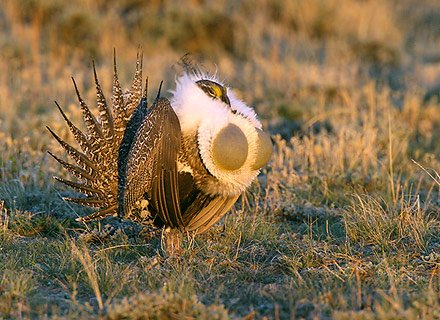Canada’s federal government has been taken to court over their own endangered species legislation.
A coalition of nature and environmental groups brought the suit against the federal government, charging they had failed to protect key habitat for endangered species in general, and the prairie-dwelling sage grouse in particular.
Their argument that they couldn’t protect the sage-grouse because they didn’t know where to find them was total rubbish. Any number of birdwatchers and conservationists in both Alberta and Saskatchewan could have pinpointed the breeding leks of the sage grouse, if only the government would have asked.
The judge in the case stated it was “unreasonable” for the government to claim it couldn’t identify breeding grounds, known as leks, when knowledge of their locations was “notorious.” The decision now requires the federal government to address the issue on both its own and provincial lands.

Male sage grouse displaying from Ecojustice.com
The landmark court battle will have implications for all of Canada’s 585 endangered species, as the government will now be forced to identify critical habitat for those animals on the list.
The federal government announced their official endangered species list with great fanfare a few years ago. They claimed it was proof they were addressing the issue, and actively working to save Canadian wildlife. Anyone who actually read the act, however, could clearly see there was no provision made to save any habitat. Just how they expected to save species without saving their habitat was never explained.
Federal agencies have been “dragging their feet” on this issue, said Lorne Scott, conservation director of Nature Saskatchewan, one of a coalition of nature and environment groups that brought suit against the federal government. “We’re down to 150 birds in Saskatchewan and maybe a couple of hundred in Alberta,” said Scott. “Their numbers have plummeted by maybe 90 per cent in the last 20 years.”
With this win, and new protections, hopefully the sage-grouse and other endangered species in Canada can begin to recover their numbers and survive in the decades to come.


